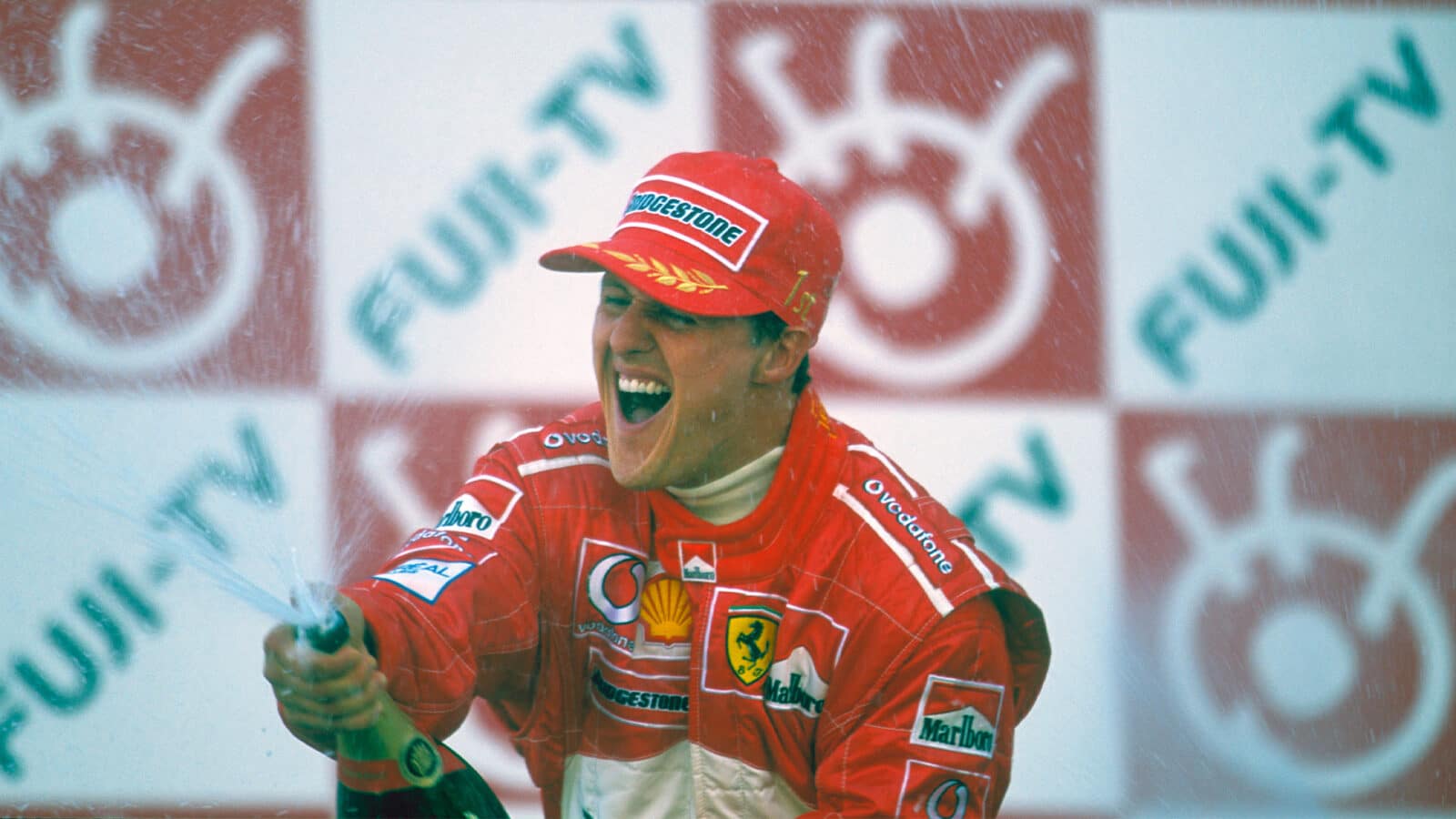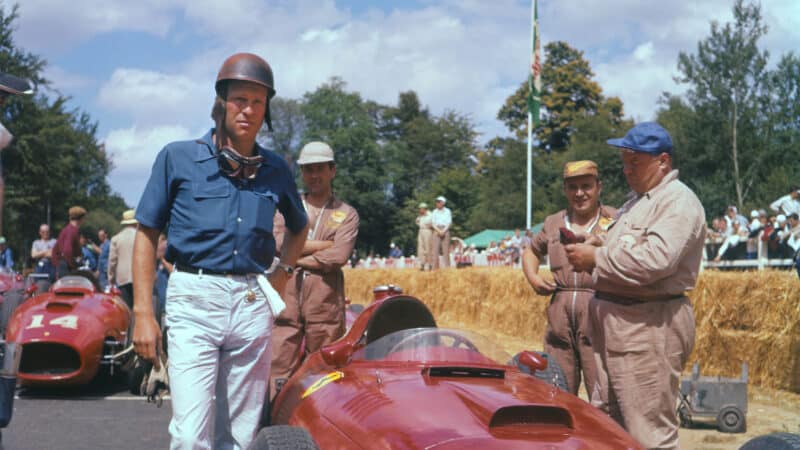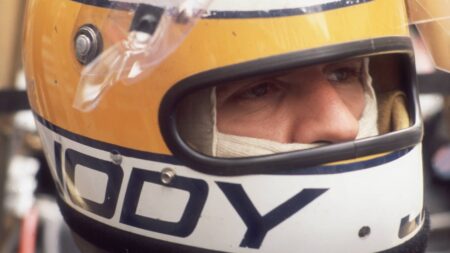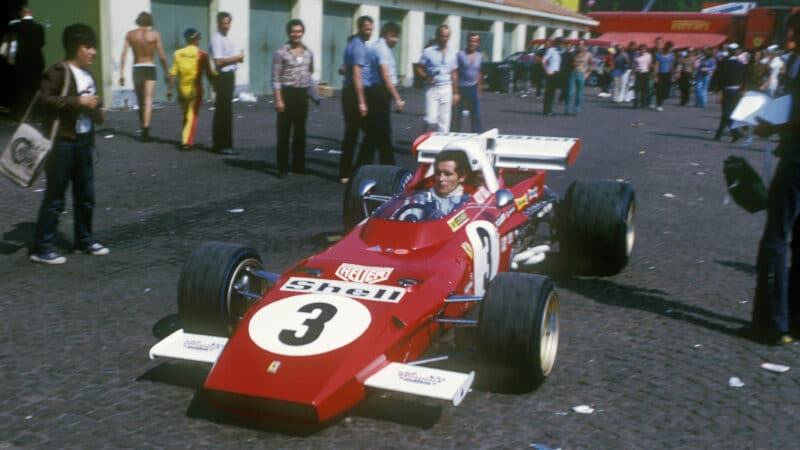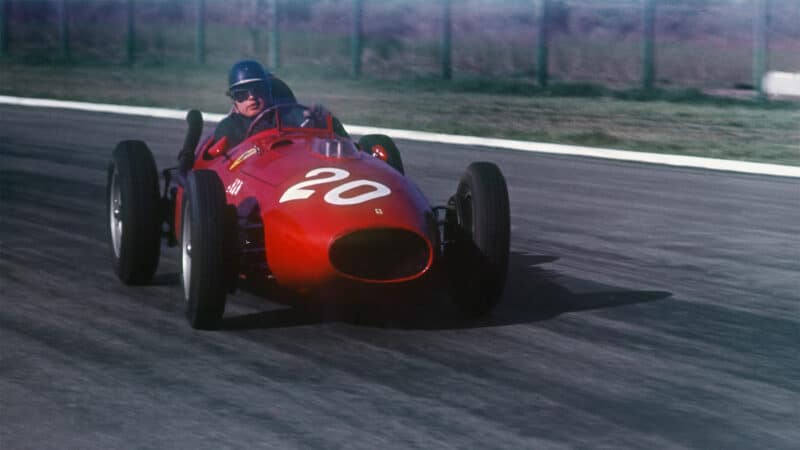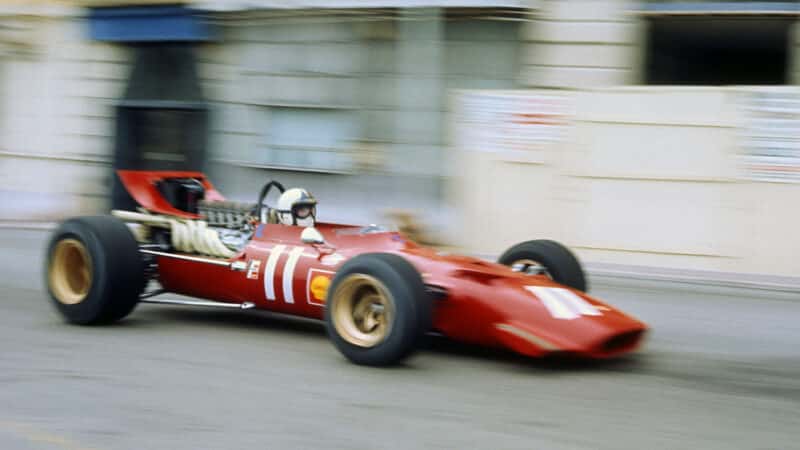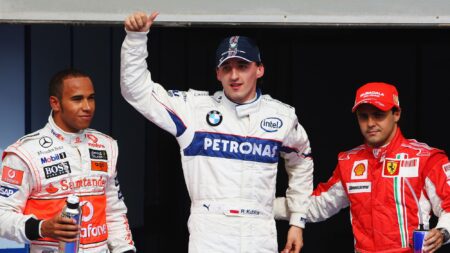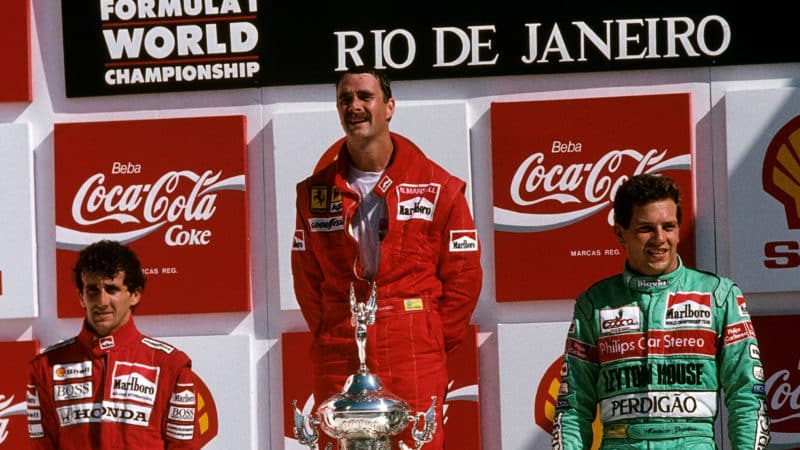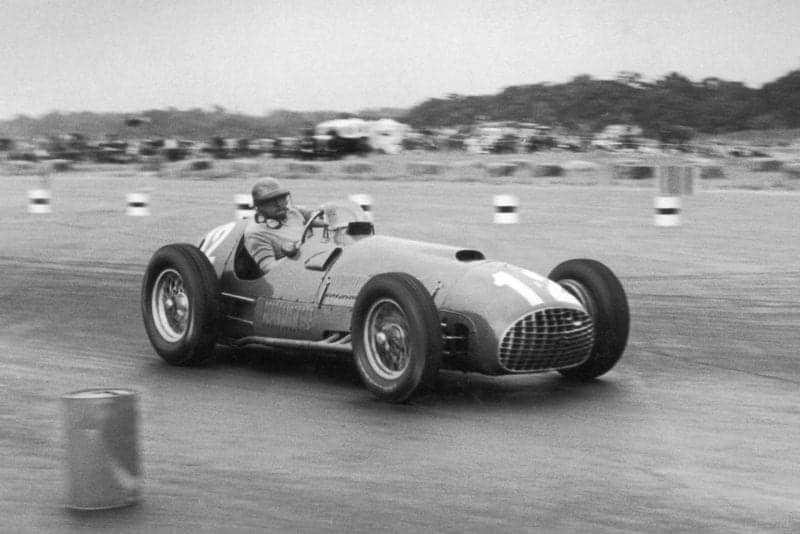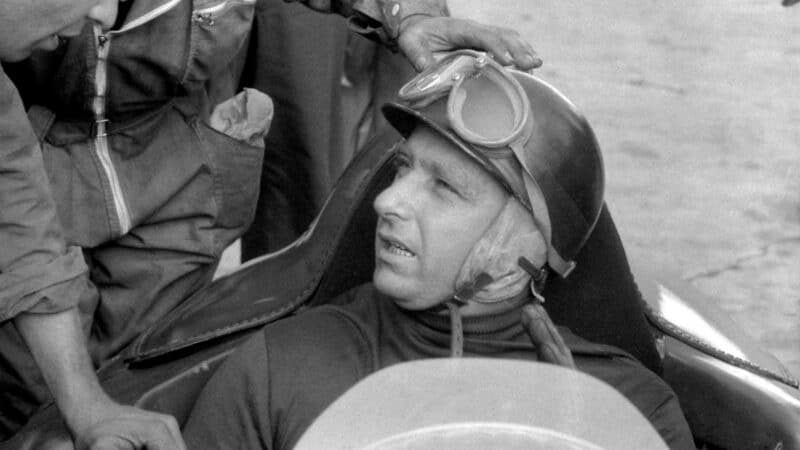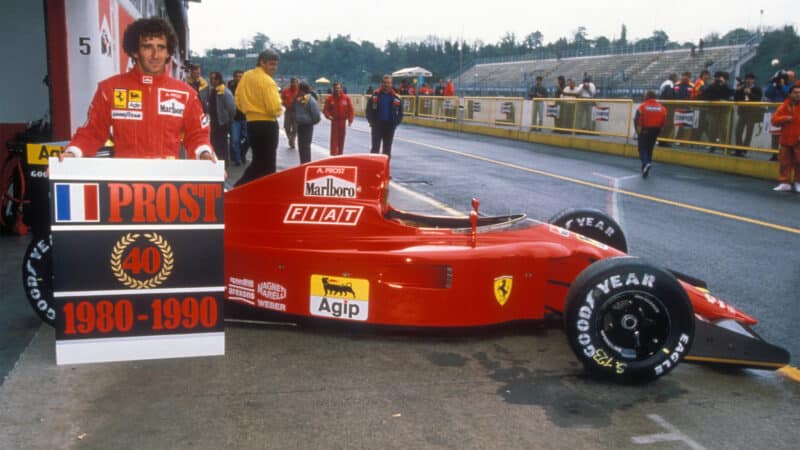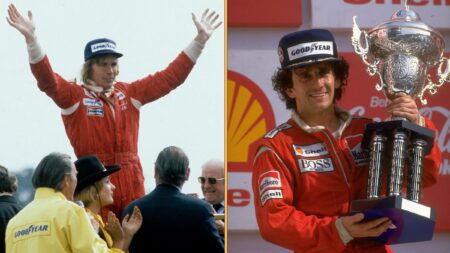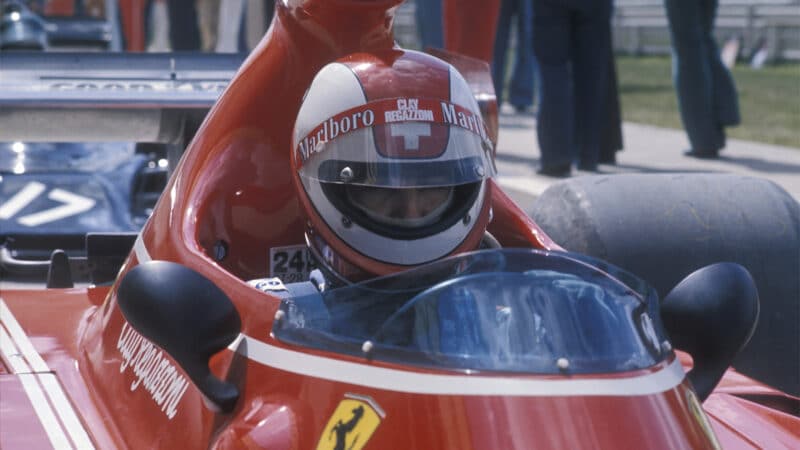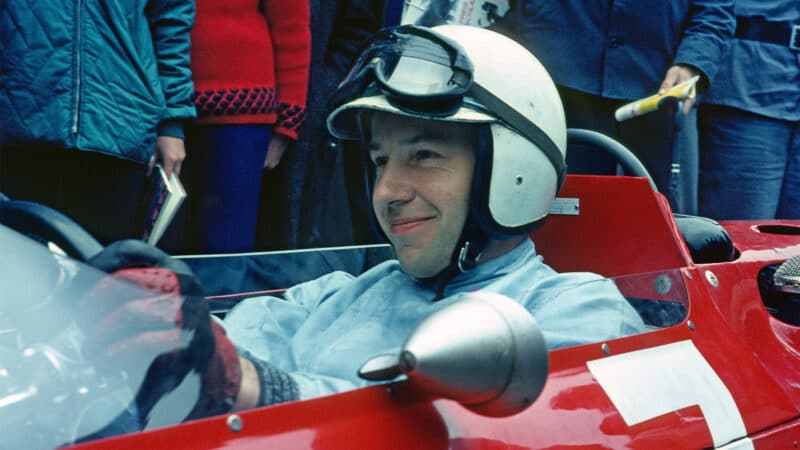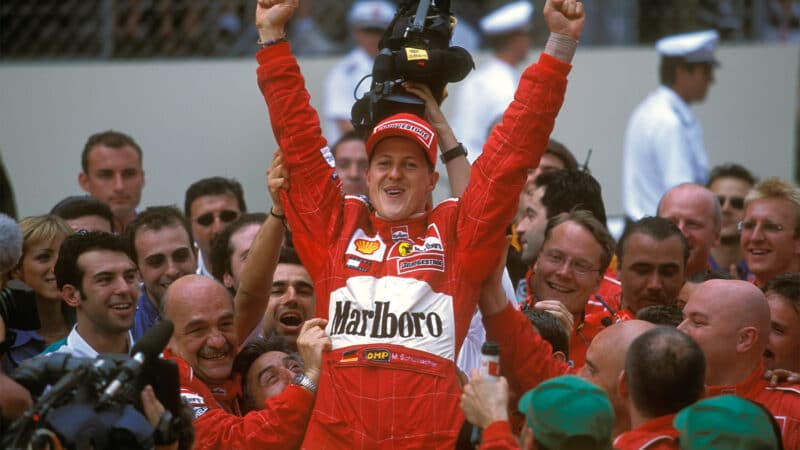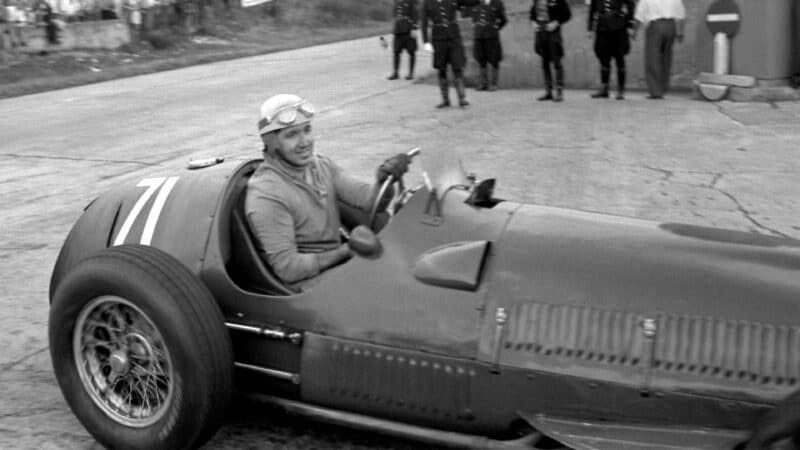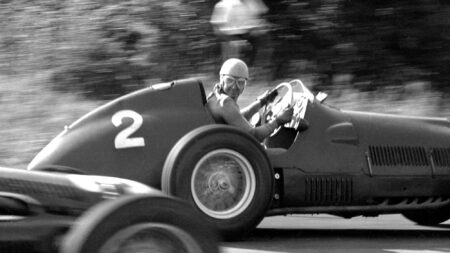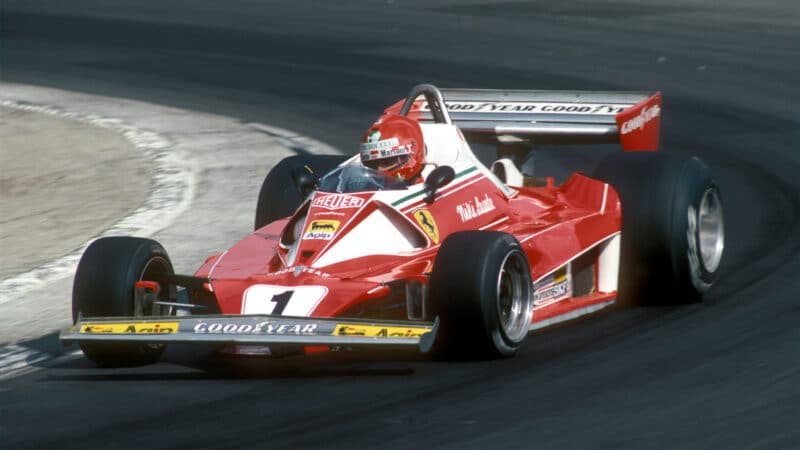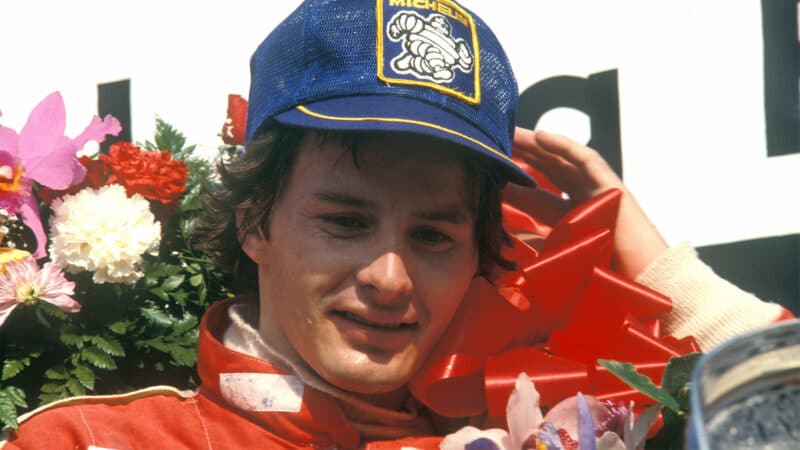It was also voluntary: Ferrari had tried to impose team orders on Luigi Musso, but he wasn’t in the mood to relinquish a seat in his home grand prix and Collins filled the breach.
It was behaviour that sat well with Enzo Ferrari – certainly more so than another slice of Collins spontaneity, just a few months later. Ferrari had no objection to his drivers’ sexual conquests, but preferred things to be casual. He regarded permanence as a potential distraction – one more reason to avert risk. When Collins married American actress Louise King early in 1957, it followed a whirlwind, seven-day courtship.
He remained part of the fold, although it would be an indifferent campaign for Ferrari as Stirling Moss and Vanwall provided the main threat to the departed Fangio’s Maserati. The new 246 Dino promised more for ’58, although a string of early-season retirements dinted Collins’s title chances. At Silverstone, though, he proved untouchable. Perceived as the hare Ferrari required to break the fast but frequently fragile Vanwalls, Collins set off in front – and stayed there long after the engine of Moss’s Vanwall had turned its last. Team-mate and chum Mike Hawthorn had a more realistic title shot, but he was a long way adrift in second and no attempt was made to slow the leader – a decision rendered more poignant with hindsight.
Two weeks later, at the Nürburgring, Collins was again a key cog as the Ferraris disputed the lead with Tony Brooks’ fleet Vanwall. On the 11th of 15 laps, however, he ran slightly wide at Pflanzgarten and clipped a bank. The car flipped up, rolled over a hedge and Collins was thrown out.
He never regained consciousness, and the sport was stripped of a charismatic cavalier.
Years at Ferrari: 1956-58
Ferrari World Championship GP starts: 20
Ferrari WC GP wins: 3
19. Phil Hill
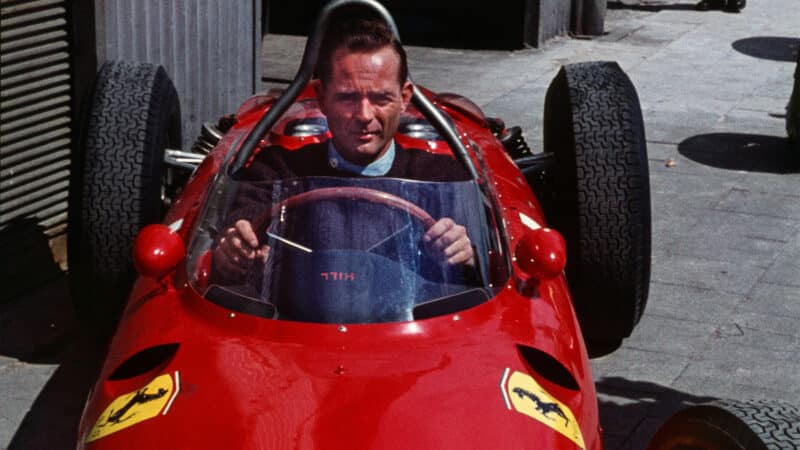
Phil Hill in his Ferrari before the 1961 German Grand Prix
It remains a quirky statistic that three men named Hill have started a world championship grand prix – and all have lifted the world title. And Phil, the first, is possibly the least celebrated.
Many regard him as a sports car specialist – and it’s hard to brook argument with a CV that includes three victories apiece at both Le Mans and Sebring. Others certainly enjoyed sharing with him in endurance events, because he was both fast and tender, usually finishing stints with his car pretty much as it had been when he started. In a previous life he’d spannered cars for friends, so mechanical sympathy was perhaps second nature.
History records that he clinched his world title in the 1961 Italian GP, the race that claimed his team-mate Wolfgang von Trips, but their tussle had hitherto been close: the German had two wins, two seconds and a fourth to his name, Hill one victory, two seconds and two thirds. He trailed von Trips by four points prior to Monza – and the title’s destiny was anything but certain with two races remaining. Fate then intervened, however, and Hill went on to become America’s first F1 champion.
His GP career rather petered out in the slipstream of that success, but he continued to compete successfully in sports cars and had the distinction of winning his final race, sharing the victorious Chaparral 2F with Mike Spence in the 1967 BOAC 500Kms at Brands Hatch.
Hill had made his world championship GP debut at Reims in 1958, when his taut approach contrasted starkly with the casual joviality of such as Hawthorn and Collins. Images of Phil Hill seldom portray relaxation in a racing car, but rather someone who was tense, edgy and acutely aware of his profession’s potential consequences. Someone, indeed, who looks as though he’d rather be almost anywhere else.
That, though, was never a barrier to speed.
Years at Ferrari: 1958-62:
Ferrari World Championship GP starts: 31
Ferrari WC GP wins: 3
18. Lorenzo Bandini

Badini’s gentlemanly demeanour belied a steely desire to win
Grand Prix Photo
If you scripted a name for a fictional Ferrari driver, it would be difficult to conjure anything better…
Bandini started all but seven of his F1 world championship grands prix for Ferrari and the journey was rarely dull. Overlooked in 1961 when the team took a punt on Giancarlo Baghetti, he was finally hired the following season, then dropped to make way for Willy Mairesse… and finally re-signed in the summer of ’63, after Mairesse was injured.
Through it all he remained calm – a conspicuous attribute in an age when Latin drivers were reputed to be anything but. He notched up his one and only points-scoring victory in the 1964 Austrian GP, his car holding together after the brutally rough Zeltweg airfield surface triggered suspension failures for erstwhile leaders Gurney and Surtees. His most significant contribution that season, however, was saved until last, Bandini easing up during the final moments of the Mexican GP to hand team-mate Surtees second place and the title.
He looked set to score another world championship victory at Reims in 1966, but a broken throttle cable put paid to that. Instead, his best results would be a brace of second places, both in Monaco, in 1965 and ’66.
One year later he led briefly on the principality’s streets and was running second, in simultaneous pursuit of his dreams and Denny Hulme’s Brabham, when he clipped the chicane. His 312 overturned before igniting, it took rescue crews an age to extract him and Bandini suffered appalling injuries: three days later, Italy lost a figure that had been almost as much a part of mid-60s Ferrari as the Prancing Horse.
Years at Ferrari: 1962-67
Ferrari World Championship GP starts: 35
Ferrari WC GP wins: 1
17. Jody Scheckter
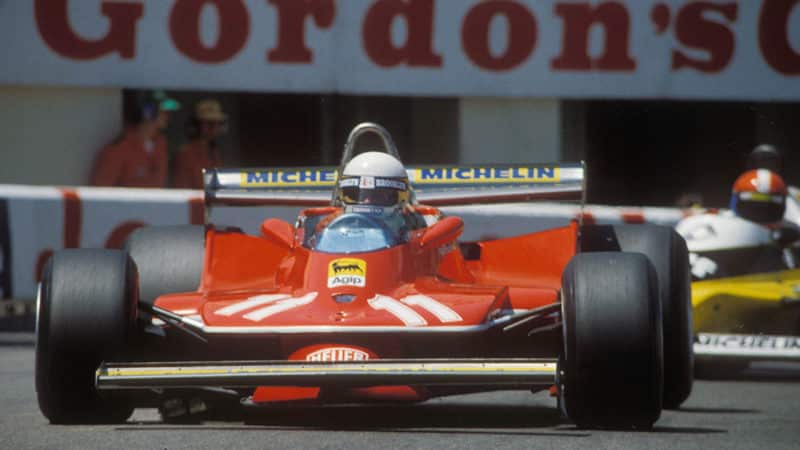
Scheckter in scintillating form at Monaco ’79
Grand Prix Photo
Mosport Park, Canada, September 27, 1980: Jody Scheckter is 26th of 28 at the end of qualifying, 0.8sec behind team-mate Gilles Villeneuve, 4.3sec shy of Nelson Piquet’s pole-winning Brabham and two places shy of making the cut – an ignominious detail prior to what should have been his penultimate grand prix start. Things weren’t a great deal better one week later at Watkins Glen, where he started 23rd and crossed the line 11th, three laps in arrears and last of the classified runners.
